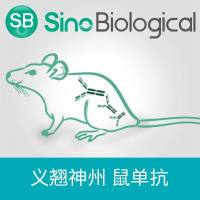Subtractive Isolation of Single-Chain Antibodies Using Tissue Fragments
互联网
459
Cell and/or tissue-specific phage antibodies (Abs) are usually generated using single-cell suspensions as a starting material for selection. However, isolation of Abs specific for certain cells and/or tissue components may be hampered because the natural architecture of the tissue (and thereby related structures), as well as certain types of cells, are lost or inefficiently recovered during the preparation of single-cell suspensions as the result of tissue digestion and (extensive) isolation protocols. This is a particularly important issue when the function of a cell, as well as its immunophenotypic make-up, is dependent on the organization within the organ. One example of such a sensitive threedimensional organization is the thymus, a primary lymphoid organ where T lymphocytes are generated (1 ). The interaction between developing T cells and the thymic stromal microenvironment is reciprocal in nature and is therefore termed “thymic crosstalk” (2 ). Thus, the composition and organization of the stromal thymic microenvironment determines the differentiation of T cells, but, on the other hand, developing T cells influence the architecture of the stromal compartment (3 ).









